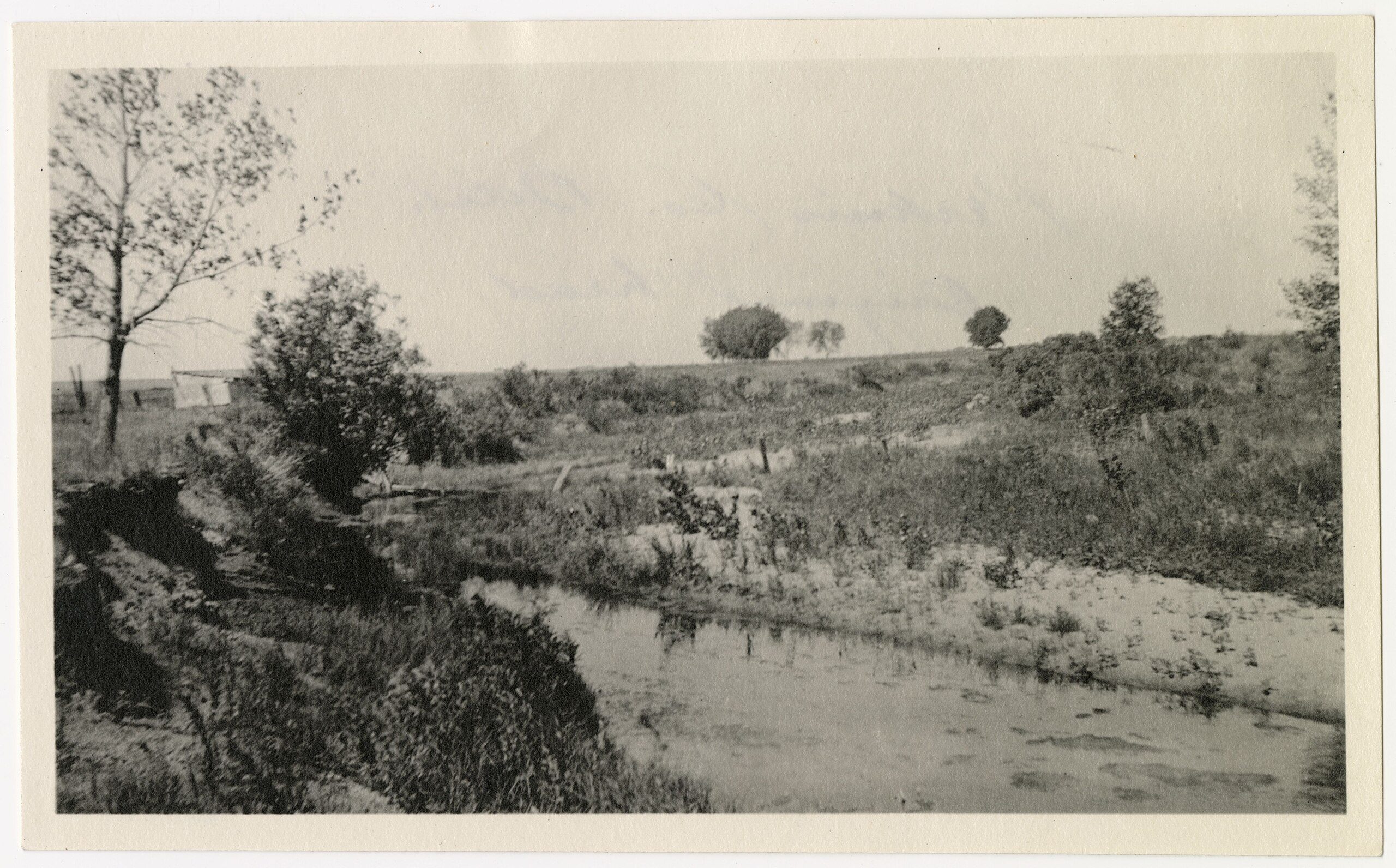- Nebraska offers $1.4 million for Colorado land.
- Colorado vows to defend its rights under the South Platte Compact.
- Landowners have 90 days to respond or face possible eminent domain.
- Attorney General Phil Weiser warns of court action if condemnation proceeds.
February 12, 2025 — Officials in Nebraska and Colorado are locked in a disagreement over the Perkins County Canal Project , which proposes diverting water from Colorado’s South Platte River to Nebraska during the non-irrigation season. While Nebraska believes the project is necessary to secure water, Colorado argues that the plan may not bring much benefit to Nebraska and could infringe on property rights in Colorado.
, which proposes diverting water from Colorado’s South Platte River to Nebraska during the non-irrigation season. While Nebraska believes the project is necessary to secure water, Colorado argues that the plan may not bring much benefit to Nebraska and could infringe on property rights in Colorado.
Nebraska’s Position.
On January 17, 2025, Nebraska’s Department of Natural Resources sent letters to six Colorado landowners offering a total of $1.4 million for approximately 650 acres along the South Platte River . The letters informed recipients they have 90 days to accept the offer. If they choose not to sell, Nebraska may move forward with condemnation proceedings under federal court authority.
. The letters informed recipients they have 90 days to accept the offer. If they choose not to sell, Nebraska may move forward with condemnation proceedings under federal court authority.
Colorado’s Response.
Colorado Attorney General Phil Weiser wrote a letter dated January 28, 2025 , to commissioners in Sedgwick County, where the canal is proposed. In it, he stated:
, to commissioners in Sedgwick County, where the canal is proposed. In it, he stated:
“[I]f Nebraska continues down this path, the State of Colorado is prepared to defend its rights under the South Platte River Compact. My commitment to defending these rights includes going to court if necessary—an outcome that is near certain if Nebraska follows through on its threat to use condemnation proceedings to compel the sale of land owned by Coloradans.”
He encouraged landowners to consult attorneys with expertise in condemnation proceedings and noted his office’s intent to monitor the situation. Weiser’s letter also emphasized Colorado’s view that the canal would provide “little to no benefit” to Nebraska.
April 17 Deadline; Eminent Domain.
Nebraska Public Media reported on January 30, 2025, that the conflict could escalate if Nebraska proceeds with eminent domain on Colorado soil. Landowners have until April 17 to respond to the offers. Both states are exploring their legal options, and the matter may ultimately be resolved through litigation if negotiations fail.
reported on January 30, 2025, that the conflict could escalate if Nebraska proceeds with eminent domain on Colorado soil. Landowners have until April 17 to respond to the offers. Both states are exploring their legal options, and the matter may ultimately be resolved through litigation if negotiations fail.
~~~
Image:
Original head of Perkins County Canal on June 24, 1918 . Colorado State University Libraries, public domain.
. Colorado State University Libraries, public domain.




Description Magnetic or Earth-generated water.
Water prospector Stephan Riess proved back in the 1950s what Earth scientists, hydrogeologists, and other specialists have only belatedly come to publicly acknowledge: Planet Earth is a water generator; new water, primary water, earth-generated water, deep-earth water, is being continually generated and is readily accessible by current drilling technology. It is high time that this fact became well known and enter into water policy discussions for the sake of the common good.
I am learning about primary water and of an effective and efficient alternative that would help solve not only California’s and the world’s water problems and avoid the expensive and unwieldy process of building antiquated water diversion systems including water tunnels.
There is a source of fresh water that is never mentioned in the mainstream media, or widely understood by geologists. This forgotten resource is called primary water. Most water conservation agencies today focus on managing atmospheric water in the form of surface runoff and ground water, while negligible consideration is given to primary water. Pressuring up from deep within the earth through rock fissures, primary water is virtually limitless and clean. According to recent research, water within the earth exceeds five times the amount of water in all the world’s oceans. The practice of accessing primary water has been around for centuries. What early Greek philosophers like Aristotle and the Italian Leonardo DaVinci believed, and enlightened scientists working at well-known universities today are exploring, is that all water is created in the mantle of the earth and is available in limitless quantities worldwide.
Drilling for primary water looks similar to drilling for ground water. The main difference in accessing primary water is that it requires drilling into a geologic fissure or fault to release the primary water that has risen near the surface. Locating well sites for primary water requires special training and experience. There are countless primary water wells that have been functioning for decades all over California and around the world. www.PrimaryWaterInstitute.org
Primary water advantages
• Provides excellent quality, clean, unspoiled water.
• Is fresh and not subject to pollution or surface radiation.
• Is created under pressure, so that it comes near the surface by itself, incurring fewer pumping costs.
• It never dries up. • Unlike groundwater, is not subject to the effects of drought.
• Does not cause subsidence like some groundwater wells.
• Refills depleted groundwater supplies from below in some instances.
• Is plentiful and replenishable.
• Can create localized water supply that is available where it is needed, when it is needed.
• Horizontal drilling rigs can benefit fish and wildlife by refilling dried up streams and lakes. Primary water was used to refill dried up lakes such as Lake Elsinore (which went dry in the 1950s). • Primary water wells can be used to supplement existing water transport systems.
Some history of Primary Water.
In the 1960’s, the late Dr. Stephan Riess, a geologist and mining engineer, introduced the California government to the concept of primary water. He proposed a water delivery plan which included drilling 8,000 primary water wells along the foothills of the western slope of the Sierra Nevada Mountains. The State government at the time was geared toward managing only atmospheric water, so the Riess proposal was ignored and the California Aqueduct was built instead. Had Riess’ plan been endorsed, the output of these primary water wells, at a conservative average of 270 gallons per minute, would be producing more than 3,100,000,000 gallons of water per day (8,000 x 270 x 60 x 24), 365 days a year. If this system was in place today, it would be unnecessary to drain the Delta through additional diversions.
By accessing primary water, it is unnecessary to use massive public works transport systems because water can be localized to meet the water needs of individual communities. DWR needs to explore and research primary water as a viable option and SWRCB needs to deny the DWR proposed water diversion intakes in the North Delta. It is essential to consider primary water in addition to atmospheric water when managing California’s inconsistent water resources. Additional technical, historical and scientific papers are available on the Primary Water Institute’s website; www.PrimaryWaterInstitute.org.
Truth vs. Vested Interests. Since his death, science has come around to Riess’s way of thinking:
• Japanese researchers reported in Science in March 2002 that the earth’s lower mantle may store about five times more water than its surface oceans.
• Earth scientists Hirschmann and Kohlstedt of the University of Minnesota reported in their 2012 article “Water in Earth’s mantle,” (Physics Today, 65 [3], 40 [2012]), “scientists have come to appreciate that vast quantities [of water] are stored in Earth’s interior. . . . Surface water is only a fraction of Earth’s water inventory.”
• Australian scientists have discovered vast freshwater reserves beneath the oceans, miles out to sea. According to the report published in the December 2013 issue of Nature, there is an estimated 500,000 cubic kilometers of low-salinity water beneath the seabed along the continental shelves around the world.
• Scientific American (March 2014) documented the presence of vast quantities of water locked far beneath the earth’s surface, generated, not by surface rainfall, but from pressures deep within: “There is a very, very large amount of water that’s trapped in a really distinct layer in the deep Earth…approaching the sort of mass of water that’s present in all the world’s oceans.” • In October 2014, the Special Inspector General of Afghanistan Reconstruction reported that affordable deep-well technology has turned 200,000 hectares (about 770 sq. mi.) of desert in southwestern Afghanistan into arable land. • In December 2014, BBC News reported the results of a study presented at the fall meeting of the American Geophysical Union, in which researchers estimate there is more water locked deep in the earth’s crust than in all its rivers, swamps, and lakes together.
If Riess is right and has correctly stated the chemical and geological reasons why he finds water in places where orthodox hydrologists affirm that it cannot possibly exist, then clearly we must be prepared to make a number of revolutionary changes in our ideas and our policies. If brand new, primary water can be found near the place where it is to be used, then the building of huge dams to impound old waters, and the digging of long canals to lead the water to its place of use, will become completely unnecessary. Every reservoir behind a dam is bound, sooner or later, to silt up.
See u-tube live interview of Dr Riess 2 months before his passing in December 1985…. “Fine Primary Water”
In this captivating interview, Dr. Stephan Riess, a renowned earth scientist, shares his groundbreaking discoveries on water sourcing and geology. Conducted in Escondido, California, in 1985, Dr. Stephan Riess discusses his expertise in finding clean, uncontaminated water deep beneath the Earth’s surface. He explains the concept of “primary water”—water originating from deep within the Earth, unpolluted by surface contaminants. Dr. Riess’s insights challenge conventional water sourcing methods and advocate for tapping into these deep wells, which could provide a limitless, sustainable water supply at a fraction of the cost of conventional methods. He discusses the inefficiencies of using surface water, which often carries pollutants, and critiques the widespread practice of recycling sewage water for public use. With vivid examples from his extensive drilling experience in locations ranging from the U.S. to Israel and Saudi Arabia, Dr. Riess offers a fresh perspective on global water resources and the untapped potential beneath our feet. This interview is essential viewing for anyone interested in water sustainability, geology, or environmental science.
Continue to follow up why isn’t our drought areas converting to primary water and especially why the Indian reservations aren’t or not allowed to since they are considered sovereign nations.
Indian reservations are considered sovereign nations within the United States, meaning that federally recognized tribes have the right to govern themselves on their reservations and are distinct political entities with their own laws and governments, although their sovereignty is limited by federal law and subject to Congressional oversight.
• Legal recognition: The US government recognizes Native American tribes as sovereign nations.
• Self-governance: Tribes have the power to establish their own governments, laws, and court systems within their reservations.
• Relationship with states: States generally do not have jurisdiction on Indian reservations.
• Federal oversight: While sovereign, tribes are still subject to federal laws and regulations.